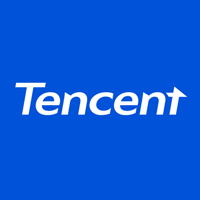Discover and explore top open-source AI tools and projects—updated daily.
localGPT-Vision by  PromtEngineer
PromtEngineer
Vision-language RAG pipeline for document Q&A
Top 53.6% on SourcePulse
This project provides an end-to-end Retrieval-Augmented Generation (RAG) system focused on vision-based document interaction. It allows users to chat with PDFs and images by indexing their visual content, retrieving relevant pages using Colqwen/ColPali models, and generating answers with various Vision Language Models (VLMs). This approach is beneficial for users who need to query documents where visual layout and elements are as important as text.
How It Works
The system employs a unique RAG pipeline that bypasses traditional text chunking and embedding. Instead, it uses Colqwen and ColPali models to create embeddings directly from document page images, capturing visual cues like layout and figures. During querying, these visual embeddings are matched to retrieve relevant pages. The retrieved document images, along with the user's query, are then fed into a selected VLM (e.g., Qwen2-VL, Gemini, GPT-4o) for response generation, offering a more holistic understanding of the document's content.
Quick Start & Requirements
- Install: Clone the repo, create a conda environment (
conda create -n localgpt-vision python=3.10), activate it (conda activate localgpt-gpt-vision), install dependencies (pip install -r requirements.txt), and install the dev version of Transformers (pip uninstall transformers && pip install git+https://github.com/huggingface/transformers). - Prerequisites: Anaconda/Miniconda, Python 3.10+, Git. For debugging on Ubuntu/Debian,
libpoppler-cpp-dev,poppler-utils,cmake,pkgconfig, andpython3-poppler-qt5are required. API keys for Gemini, OpenAI, and Groq may be needed. - Run:
python app.py - Access: http://localhost:5050/
- Docs: https://github.com/PromtEngineer/localGPT-Vision
Highlighted Details
- End-to-end vision-based RAG pipeline.
- Indexes documents using visual embeddings (Colqwen/ColPali), eliminating text extraction and chunking.
- Supports multiple VLMs: Qwen2-VL-7B-Instruct, LLAMA-3.2-11B-Vision, Pixtral-12B-2409, Molmo-7B-O-0924, Google Gemini, OpenAI GPT-4o, LLAMA-3.2 with Ollama.
- Session management for persistent chat history and indexes.
Maintenance & Community
- Open to contributions via pull requests.
- Star History link provided.
Licensing & Compatibility
- The repository does not explicitly state a license in the README.
Limitations & Caveats
Response quality is highly dependent on the chosen VLM and the resolution of document images. Debugging setup instructions are specific to Ubuntu/Debian-based systems.
3 months ago
1 day

 wdndev
wdndev Alibaba-NLP
Alibaba-NLP adithya-s-k
adithya-s-k snexus
snexus redis-developer
redis-developer liweiphys
liweiphys tjmlabs
tjmlabs weiwill88
weiwill88 rom1504
rom1504 VectifyAI
VectifyAI Tencent
Tencent bhaskatripathi
bhaskatripathi